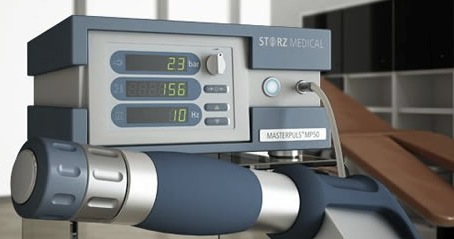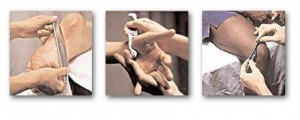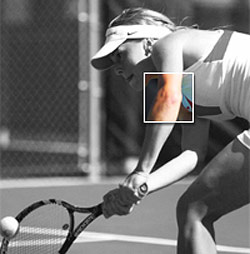 Shockwave Therapy is a non-surgical treatment of soft tissue, bone, and joint pain. Shockwave Therapy provides a safe, non-invasive, non-surgical alternative for those suffering with acute and chronic pain such as: knee pain, heel pain, foot pain, ankle pain, hamstring pain, back pain, neck pain, shoulder pain, elbow pain, wrist pain and hand pain. It is also used to address sports injuries, scar tissue, stress fractures, enhance bone healing, and anyone suffering from joint and tendon disorders.
Shockwave Therapy is a non-surgical treatment of soft tissue, bone, and joint pain. Shockwave Therapy provides a safe, non-invasive, non-surgical alternative for those suffering with acute and chronic pain such as: knee pain, heel pain, foot pain, ankle pain, hamstring pain, back pain, neck pain, shoulder pain, elbow pain, wrist pain and hand pain. It is also used to address sports injuries, scar tissue, stress fractures, enhance bone healing, and anyone suffering from joint and tendon disorders.
There are no side effects or long term effects with shockwave therapy and no extended recovery period. Shockwave therapy improves the metabolism in the pain region, increases blood circulation, promotes and accelerates the recovery of injured tissue, and stimulates the body’s repair mechanisms. Damaged tissue gradually regenerates and eventually heals.
Shockwave Therapy:
~ Decreases muscle tension and spasms
~ Reduces pain in the affected area
~ Decreases risk of Oedema (build up of fluid in the body which causes the affected tissue becoming swollen)
~ Increases production of collagen
~ Improves metabolism and circulation
~ Increases oxygenation to the damaged tissue
~ Dissolves calcified fibroblasts (type of cell that is responsible for making collagen)
Shockwave Therapy is exceptionally good at pain management by stimulating a metabolic reaction in the affected tissue, causing stress fibers to change in their permeability. Shockwave Therapy breaks down calcific deposits which induces an analgesic reaction, which blocks pain messages.
During a Shockwave treatment, a high-intensity sound wave interacts with the tissues of the body, effectively re-injuring the area on a cellular level and breaking up scarring that has occurred in the tendons and ligaments. The controlled re-injuring of tissue allows the body to regenerate blood vessels and bone cells. The resulting re-vascularization leads to faster healing, reversal of chronic inflammation, stimulation of collagen and a return to pre-injury activity levels.
To find out more about Shockwave Therapy, and to find out if this treatment is right for you, please contact our health care practitioners at 250-382-0018.




